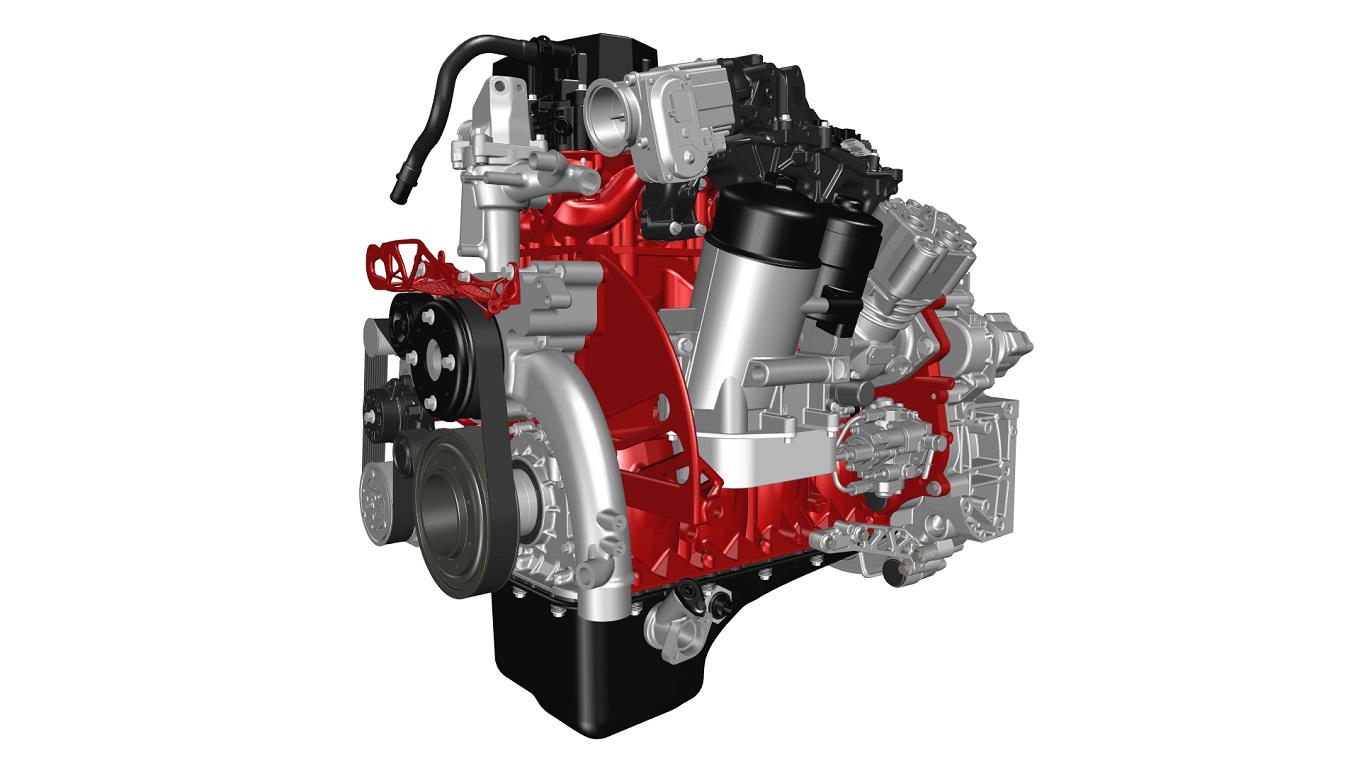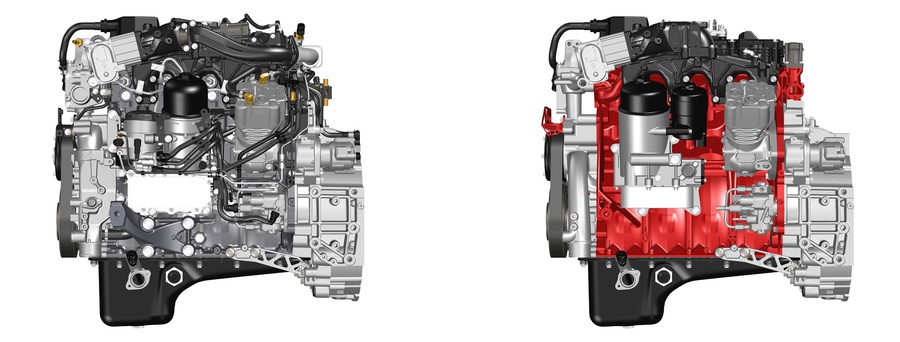Инженеры Renault Trucks должны были оценить перспективность использования 3D-печати металлических изделий при изготовлении двигателей внутреннего сгорания. Технология позволяет слой за слоем формировать детали сложной формы, при этом сокращается расход исходных материалов, уменьшается число операций по обработке и сборке, а также оптимизируется форма компонентов.
Для экспериментального силового агрегата DTI 5 (класс экологичности Евро-6) по новым техпроцессам изготовили 200 деталей. В частности, на принтере напечатали часть кронштейна генератора (на 18% легче серийного аналога), держатель проводов (-42%), крышки подшипников распредвала (-36%), коромысла (-36%), а также 80 деталей блока цилиндра, 45 компонентов головки блока цилиндров и другие детали. Итоговый результат: снижение общей массы двигателя на 120 кг (-25%). Мотор успешно прошел стендовые испытания, которые длились 600 часов.
Несмотря на очевидные преимущества новая технология пока ещё слишком «сырая» для внедрения в серийное производство, подчеркнули в Renault. В краткосрочной перспективе новые технологические процессы могут быть использованы для выпуска малых партий деталей или под специфические заказы. Исходя из положительного опыта с экспериментальным двигателем DTI 5, разработчики французской компании продолжат исследования в данном направлении.
A team of Renault Trucks engineers and designers is working on an additive manufacturing process - metal 3D printing - that is set to boost the performance of engines. Technology of the future is fast becoming a reality, as can be seen from the complex parts that have already been successfully tested inside a Euro 6 engine.
The Renault Trucks Lyon Powertrain Engineering department has focused on using metal additive manufacturing as a future engine manufacturing process. A prototype DTI 5 4- cylinder Euro 6 step C engine has been designed exclusively using 3D printing.
Although the complete engine was already designed virtually, rocker arms and camshaft bearing caps were manufactured by metal 3D printing and successfully bench-tested for 600 hours inside a Euro 6 engine. "The aim of this project is to demonstrate the positive impact of metal additive manufacturing on the size and weight of an engine. This process has enabled us to reduce the weight of a 4-cylinder engine by 120 kg or 25%", explained Damien Lemasson, project manager at Renault Trucks. "The tests we have carried out prove the durability of engine components made using 3D printing. It's not just cosmetic."
Metal additive manufacturing opens up new development opportunities for thermal engines. This printing process, which works by adding materials layer after layer, can be used to create complex organic forms, as well as optimizing the sizing of parts and reducing the number of assembly operations and therefore the number of components in an engine. "Additive manufacturing releases us from constraints and unlocks the creativity of engineers. This procedure is a source of disruptive technology for the engines of tomorrow, which will be lighter and more functional, thereby offering optimal performance," Damien Lemasson added. The number of components in the DTI 5 engine has been reduced by 25%, making a total of 200 fewer parts.
For haulage companies, metal 3D printing carries a number of advantages. They will be able to optimize the overall operating costs of their fleet of vehicles, as a reduction in engine volume will lead to greater payloads and lower fuel consumption.
In the short-term, this manufacturing procedure can be used for highly specific applications or small runs. Following on from these successful initial tests, engineers at Renault Trucks will be continuing their work on this manufacturing process to further increase the performance and functionality of truck components.






